Top 10: Sustainability Strategies of Luxury Fashion Brands

Fashion gets a bad rap when it comes to sustainability – and for good reason.
As one of the world’s most polluting and wasteful industries, fashion accounts for around 10% of global carbon emissions, according to the World Bank.
That's the same amount of greenhouse gas emissions each year as the entire economies of France, Germany and the UK combined, according to a report by McKinsey.
And with its current growth trajectory, the industry misses the Paris Agreement commitment by 50%.
Beyond emissions, the Ellen MacArthur Foundation says around 20% of wastewater worldwide comes from fabric dying and treatment, less than 1% of used clothing is recycled, and 87% of the fibres used or clothing end up in landfill.
But action is being taken, albeit slowly.
More than 160 brands have signed up to non-profit The Fashion Pact, which pledges to reach net-zero carbon emissions by 2050, have 50% renewables in their own operations by 2025, and 100% by 2030 – with around a third of members already achieving the target in 2020.
Increasingly too, brands are setting science-based targets (SBTi).
Home to many of the world’s high-end fashion and accessory brands, European luxury goods conglomerates LVMH and Kering have rolled out science-backed sustainability roadmaps – addressing everything from renewable energy to responsible sourcing.
LVMH was the first to secure the prestigious CDP Triple A rating for environmental impact in 2022, one of just 12 companies to achieve this status – and just recently, in 2024, Kering landed its Triple A rating.
But what of the leading luxury fashion brands themselves? How are they taking the carbon out of the catwalk?
Here are 10 to discover.
Stella McCartney
Founded: 2001
CEO: Amandine Ohayon
Arguably the loudest and most influential voice in ethical and sustainable fashion, Stella McCartney has been a trailblazer in eco fashion since launching her eponymous label in 2001.
The only major fashion house in the industry to have had ethics at its heart since day one, the brand is the first luxury fashion brand to never use animal leather, feathers, fur or skins – and adopted sustainability principles in 2006.
Those principles have evolved, with Stella McCartney taking the industry lead on cruelty-free alternative materials, process innovation, circular ambitions, regenerative practices, and community wellbeing.
The only brand from the fashion industry to attend COP26 in Glasgow, Stella McCartney (the brand and person) was also at COP28, strongly advocating for policy and regulatory change to incentivise the decarbonisation of the fashion industry, human and animal welfare.
The designer also has a role as a special adviser on sustainability to LVMH CEO Bernard Arnault.
In line with its strategy to be net zero by 2040, the company has reduced operational emissions by 76%, increased its sites running on renewable energy to 68% – and reduced Scope 3 emissions by 22%. This puts the brand on track to meet its 2030 target.
As a force for fashion industry change, Stella McCartney centres on collaboration and innovation – and more than ever, is passionate about showing how with the right technology and partnerships, fashion can be fast in its move to more sustainable measures.
As co-founder of the Collab SOS Fund – a US$200 million LVMH-backed fund for climate solutions, McCartney is backing pioneering startups and cutting-edge technologies in developing climate solutions, working with many of them to develop and then use new and alternative materials.
As well as using responsibly sourced materials, such as organic cotton, synthetic silks, upcycled faux furs and recycled polyester, the brand has introduced innovative alternatives into its collections. Like APINAT, a biodegradable rubber into its footwear, and Eco Alter-Nappa, a smooth vegan alternative to animal leather, launched a decade ago.
And since 2017, McCartney has been working with mycelium startup Bolt Threads, launching the Frayme Mylo Bag, the world's first luxury bag made from mycelium, a mushroom-based leather alternative.
In its latest move, Stella McCartney has announced strategic partnerships with Mango Materials and Air Carbon – to develop new innovations and materials from GHG emissions.
Recycling is a key strategy in the brand’s sustainability story – and in 2022, the company launched its first completely circular product, a mono material parka with Econyl, meaning 100% regenerated nylon from pre- and post-consumer waste like fishing nets and industrial plastic.
Vivienne Westwood
Founded: 1971
CEO: Carlo D'Amario
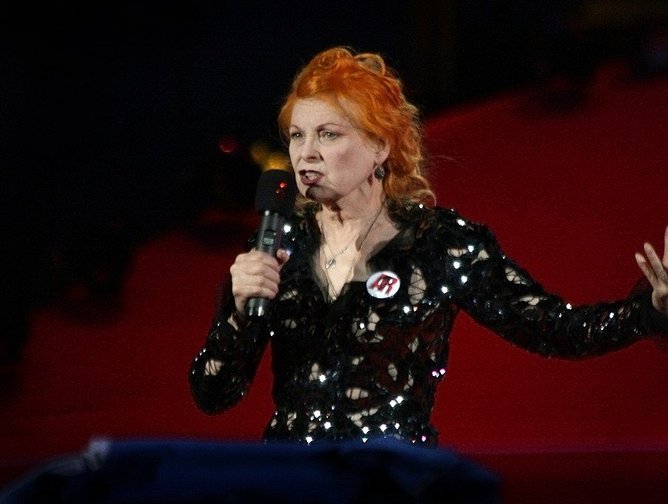
Environmental issues have always been a focus for the eponymous brand of late British fashion designer Vivienne Westwood – born in 1971 as a small boutique on the Kings Road in London.
Never afraid to make a political or social statement with her style (think eye-catching t-shirts with slogans like Climate Revolution and We Should All Be Feminists), the queen of punk frequently shaped her catwalks shows around climate protests – from the Climate Revolution banner displayed at the end of her SS2013 show, to the climate change zombies that walked the runway for the following Spring.
As well as giving a voice sustainability in fashion, the legendary British label continues to stay true to its de factor manifesto – ‘buy less, choose well, make it last’ – by practicing what it preaches.
Responsible sourcing of materials and regenerative agriculture is central to the brand’s sustainability strategy, with more than 90% of materials in its recent RTW collections made from lower-impact materials – including organic cotton, ethically produced wool, and recycled metals.
In its current RTW mainline collection, where cotton is used most, more than 95% of the cotton the brand buys is organic (70%), recycled (3%) or from farms with regenerative agriculture practices (12%).
Deeply committed to respecting animals, all suppliers must commit to the Vivienne Westwood's principles on animal ethics. Real animal leather is not used in RTW collections, just for accessories – and all leather is sourced from farm with high animal welfare standards.
Where possible, Vivienne Westwood uses innovative material alternatives, to substitute real leather – including recycled polyester, partially or fully bio-based PU leather – and continues to explore alternative materials such as cactus leather, apple leather, cotton canvas, wool and recycled.
The company partners with local industries in the UK, Europe, India and Africa to source textiles in smaller batches – not only ensuring less waste in production but allowing artisans the chance to stand out.
And armed with sourcing and design teams trained in sustainability principles, the British brand is rolling out a traceability pilot to support its sourcing practices.
When it comes to addressing carbon emissions, Vivienne Westwood is on track to switch to 100% renewable energy in 2024 and is now supporting its supply chain partners in Italy and worldwide to do the same.
Gucci
Founded: 1921
CEO: Jean-François Palus
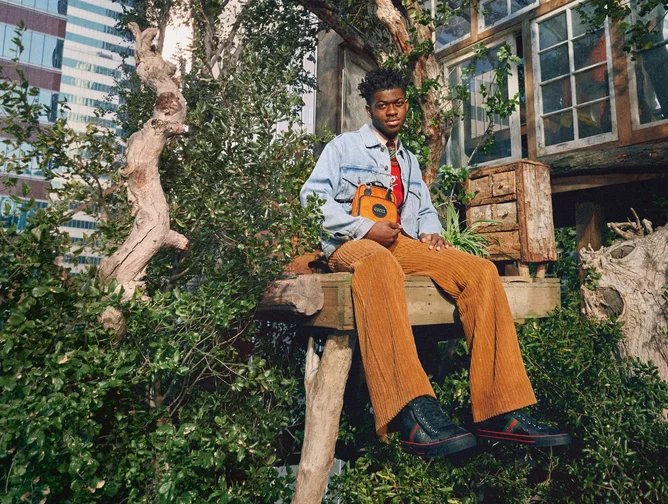
Founded in Florence in 1921, Gucci became a worldwide brand under the direction of the founder’s son, Aldo Gucci – and was acquired by fashion conglomerate Kering in 1999.
Unveiling its 10-year sustainability strategy (Culture of Purpose) in 2015, Gucci set out a number of 2025 targets across people and planet, from decreasing greenhouse gas emissions by 50% to achieving 100% traceability for its raw materials.
Ahead of schedule on some targets, Gucci is now carbon neutral in its own operations and entire supply chain since 2018 and 2021, respectively – and is on a journey towards a positive approach.
Committed to designing out waste and pollution while enhancing durability, reuse, recycling and second life, the brand runs Gucci Scrap-less, to reduce the footprint of its leather manufacturing – and was recently awarded the Ellen MacArthur Foundation Award for Circular Economy, in recognition of its efforts to embed circularity across its business model.
The House took home the prestigious award for its ‘Denim Project’, available in 2024, which combines 74% regenerative cotton with 26% post-consumer recycled fibres. A digital product passport is include with every item tracing the journey from raw materials to production.
Gucci doesn’t use animal furs, guarantees it makes 95% of its raw materials traceable, and continues to increase recycled raw materials and organic fibres in its collections.
Launching its first sustainable collection Gucci Off the Grid in 2020, all pieces featured were made from organic cotton, recycled steel, regenerated polyamide and ECONYL, a material made from post-consumer waste.
In taking an industry lead, Kering-owned Gucci recently launched the first Circular Hub in Tuscany.
Dedicated to studying ways to improve circularity, including through better durability and recyclability of products, as well as minimising waste and pollution from production to end of life, the plan for the hub is to cut emissions from managing waste generated by Gucci’s leather-goods production by up to 60%.
The hub’s activities will later be extended to Kering’s other brands, before opening to the wider fashion sector.
In charting its progress towards a more sustainable future, Gucci uses Environmntal Profit and Loss (EP&L) accounting, which was pioneered by its parent Kering – which recently earned the prestigious CDP Triple A rating for environmental transparency.
Chanel
Founded: 1910
CEO: Leena Nair
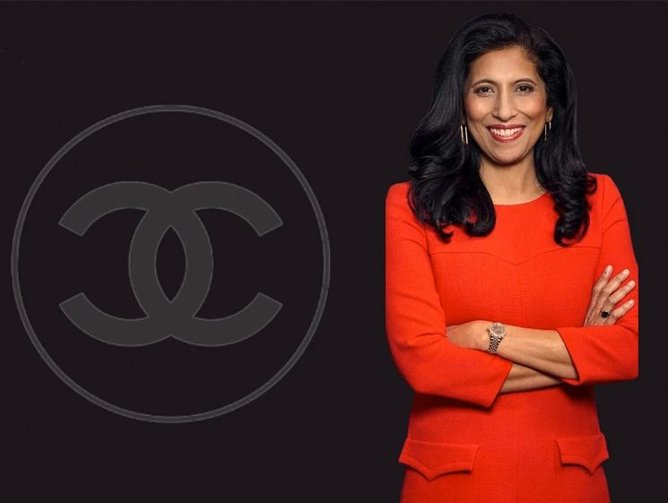
Introducing a 10-year climate action plan (Chanel Mission 1.5) in 2020, Chanel set out science-based targets to reduce the Group’s impact by 2030 and was among the first in the luxury sector to issue Sustainability-Linked Bonds and to sign up to The Fashion Pact.
Following four main actions, the luxury goods company is on a mission to reduce the carbon footprint of operations by 50% and from the value chain by 40%, to shift to global 100% renewable energy by 2025 (currently 97%), and to support vulnerable communities, farmers, and entrepreneurs in the supply chain.
In transportation, which represents 20% of Chanel's footprint, the LVMH-owned brand is making inroads – increasing the use of EVs for day-to-day deliveries, switching from air to sea when possible, and shifting to cargo flights on routes and carriers that produce less CO2, saving around 10,000 tonnes of CO2 each year.
In acquiring two core Italian leather goods manufacturers, Chanel has also ensured material sourcing is localised to reduce shipping.
And in materials, from leather to packaging, the iconic luxury brand is taking sustainable steps, as it aims to ensure transparent supply chains and implement strategies such as regenerative agriculture and tech partnerships to reduce these emissions.
Among partnerships, Chanel has backed Oritain, a New Zealand startup that uses forensic analysis to trace materials and commodities back to their origin; and invested in Finnish startup Sulapec, which creates biodegradable and micro-plastic-free materials from wood chips and natural binder as plastic alternatives.
For its 21/22 collection, Chanel produced four eco-responsible tweeds in partnership with tweed atelier Lesage – tweeds made from more than 70% responsible yarn.
Extending sustainable action to its digital presence, Chanel has a pioneering approach to calculating the carbon footprint of its web pages, driving down emissions by 16% despite traffic increasing by 28%.
Hermès
Founded: 1837
CEO: Axel Dumas
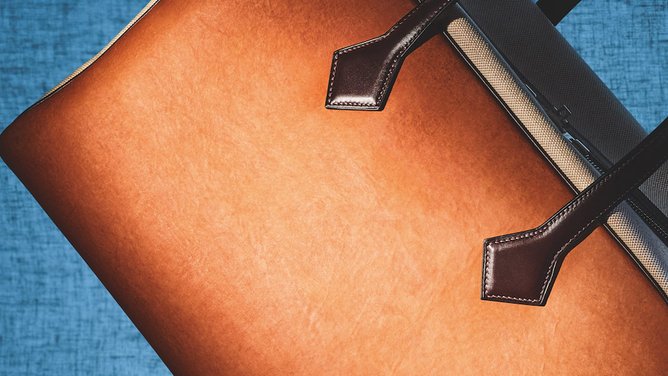
The oldest of the brands listed here, Hermès was established in Paris in 1837 by Thierry Hermès as a harness workshop dedicated to serving European noblemen – and has since delivered its artisanal know-how through six generations.
Famed for its much-coveted Birkin bag and highly prized silk scarves, the Parisian fashion house boasts artisanal values and a craftsmanship model, with around 60% of its products crafted in-house using materials provided by a network of long-term suppliers.
Taking a responsible approach to production and preservation, the brand integrates the principles of circularity into its manufacturing process while also pushing ahead with R&D in the design of innovative alternative materials.
As well as using low-impact materials, including organic cotton, Hermès partners with biotech startup MycoWorks to produce a leather alternative made from mycelium – launching its first mushroom-made bag, the Victoria, in 2021.
The House offers repair and restoration services to ensure the longevity of products a well as upcycling department Petit H, which takes excess materials to create one-off or limited pieces.
Located all over the world, repair workshops are dedicated to preserving the sustainability of its beautifully crafted pieces, from bags to scarves – restoring more than 200,000 products in 2022 alone.
Localising supply chains and production is important to the brand, and more than three-quarters of Hermès products are manufactured in France, including 100% of leather goods.
Having set science-based targets to decrease emissions, the House is aiming to be net zero by 2050 - both in its direct operations and throughout its supply chain – and is on track to achieve this.
Employing close to 20,000 people, including more than 16 artisans in 16 fields, Hermès is committed to employing people with disabilities, with a rate of 6.4%, above the legal requirement.
Burberry
Founded: 1856
CEO: Jonathan Akeroyd
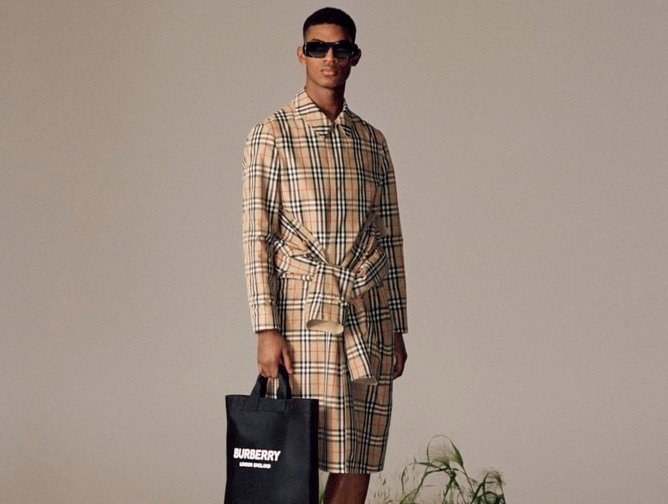
When it comes sustainability, Burberry is a house of fashion firsts.
It was the first luxury fashion brand to receive SBTi approval for its net-zero emissions goal (2022) including a 90% reduction in Scope 3 emissions by 2040.
The first label to be analysed and rated for the Standard Ethics rating company’s European Fashion and Luxury Index, securing a ‘strong’ sustainability compliance.
And the first of its peers to tap the sustainability bond market, with a hugely oversubscribed US$411.1 million 1.125% five-year deal in 2021, with proceeds helping the brand to meet its sustainability goals and even raise some targets.
The British luxury brand is currently carbon-neutral across all global operations and is looking to be climate positive by 2040.
With supply chains one of fashion’s biggest challenges, and armed with an ambitious target of 90% reduction by 2030, Burberry is tackling this in a number of ways – including via strategic investments.
Upon recent acquisition of Italian supplier Pattern SpA, Burberry can embed sustainability further into its value chain.
“It will enhance our capabilities, building on our strong foundations in the UK, and provide greater control over the quality, delivery, and sustainability of our products,” said CEO: Jonathan Akeroyd.
In sourcing materials, Burberry banned exotic leathers in 2022 and is targeting 100% of key raw materials to be traceable and from certified sources by 2025.
With plans for 100% certified organic cotton by 2025, the brand is procuring its cotton with the help of the Better Cotton initiative, the largest cotton sustainability programme in the world.
Encouraging circularity, reducing waste and prolonging the life of products and materials is central to Burberry's strategy, with partnerships in recycling, repurposing and donating unsold finished products rolling out worldwide.
This includes its collaboration with the British Fashion Council.
ReBurberry Fabric initiative has donated 12,000 metres of surplus Burberry fabrics to more than 30 fashion schools and universities in the UK, allowing materials to be upcycled.
And in 2020, the brand launched the ReBurberry Edit, a collection of 26 styles made using the “latest innovations in sustainable material science”. Think trench coats made from nylon developed from castor oil and a polyester yarn made from recycled plastic bottles.
More recently, Burberry has partnered with pre-loved luxury platform Vestiaire Collective on a circular fashion project – which means customers in the US and UK can trade their second-hand Burberry outwear and handbags for a gift card to reinvest in the brand.
Louis Vuitton
Founded: 1854
CEO: Pietro Beccari

Starting out as a maker of luxury trunks and luggage in 1854, Louis Vuitton has grown into a luxury fashion and accessories brand, which, in 1987 merged with Champagne and cognac brands Moet et Chandon and Hennessy to become LVMH.
Following the launch of the LVMH LIFE 360 programme in 2021 and based on three key deadlines (2023, 2026 and 2030), Louis Vuitton's environmental plan is structured around the four pillars of biodiversity, climate, creative circularity and traceability.
The Maison is committed to reducing both its direct carbon footprint by 55% by 2030 as well as those generated indirectly by its supply chain – reductions that have been SBTi-validated.
In the shorter term, Louis Vuitton’s sustainable development roadmap Our Committed Journey establishes ambitious and quantified objectives to be reached by 2025 – with a focus on preserving biodiversity and protecting climate through circular creativity, as well as DEI.
For example, the heritage brand recently joined forces with conservation charity People for Wildlife in an environmental partnership to maintain and improve biodiversity in a 400,000-hectare area in Australia.
The French fashion house is gradually integrating an eco-design approach by employing re-used, recycled, bio-based and upcycled materials in an increasing number of collections.
Among sourcing targets, Louis Vuitton plans to source 100% raw materials responsibly by 2025, and is on track to achieve this with 78% of materials sourced either certified or recycled under the strictest of environmental standards.
Already, 96% of leathers used are Leather Working Group-certified, which is considered the highest in leather tanning, while a water-free process has been implemented for some of the brand’s leather goods collections.
Packaging is also a priority, with 100% of its shopping bags and boxes now 100% recyclable and made from responsible fibres, of which half are recycled fibres.
Since the 2015 launch of the LVMH Internal Carbon Fund, an initiative promoting the financing of actions within the Group that combat climate change, more than 65 Louis Vuitton projects have been financed.
What's more, Louis Vuitton is now home to the first bioclimatic building in France, the Atelier de l’Oratoire. Setting a new industry standard in eco design and marking the first of a series of sustainable new workshops for the brand, the fine leather atelier features sustainable architecture and energy efficiency (think FSC-certified wood and temperature sensors).
Dior
Founded:
CEO: Delphine Arnault
Founded in 1946 by French fashion designer Christian Dior with backing from the cotton fabric magnate Marcel Boussac, the Dior brand is renowned for creating the ‘new look’ for women and later branched out into perfume, watches, jewellery, shoes and accessories.
Acquired fully in 2017 by French luxury group LVMH for €12 billion, the fashion brand is split into Dior RTW and Christian Dior Couture with Delphine Arnault, the daughter of LVMH owner Bernard Arnault, appointed CEO of the latter in 2023.
Today the brand has 245 boutiques around the world.
A symbol of women’s empowerment since its founding, that philosophy continues today with an education programme, Women@Dior aimed at mentoring young women from underprivileged countries.
Part of UNESCO’s Global Skills Academy, which aims to help ten million young people build skills for employability and resilience by 2029, Women@Dior has already coached and supported thousands of young women from nearly 60 countries.
Guided by the environmental roadmap LIFE 360 of parent company LVMH, Dior’s focus is on protecting biodiversity, fighting climate change, the circular economy, and transparency – with science-based targets to reduce its energy consumption emissions by 50% by 2026 and Scope 3 emissions by 55% by 2030.
Among recent initiatives, Dior created a unique concept store in Dubai using a 3D printing system and natural materials – and partnered with environmental organisation Parley for the Oceans to create new yarns from plastic garbage and fishing gear collected from beaches in the Maldives and Sri Lanka.
This resulted in a recycled polyester that was used in beachwear capsule collection Parley x Dior, for which the brand secured the Forbes Green Ecological Transition Prize.
Prada Group
Founded: 1913
CEO: Andrea Guerra
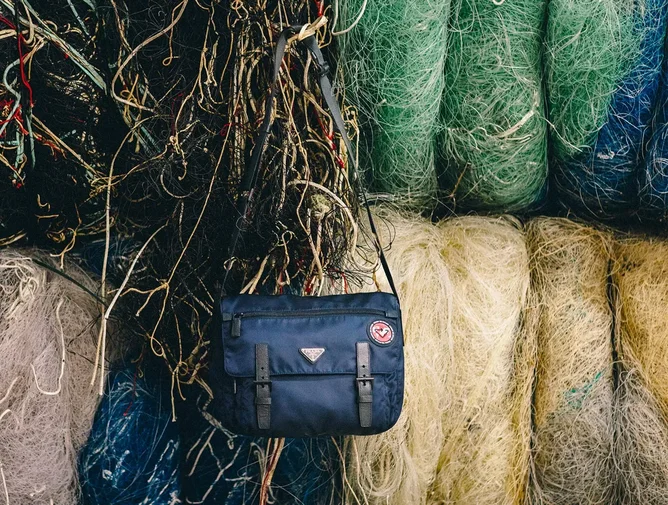
Founded by Mario Prada in 1913 as a leather goods store in Milan, Prada has grown into a global fashion powerhouse under the leadership of Mario’s granddaughter Miuccia.
The company's 13,700-strong workforce has been led by CEO Andrea Guerra since January 2023.
Publishing its first sustainability report a decade ago, the Group formalised its commitment to sustainability issues through the publication of a dedicated policy in 2019 – and then submitted its GHG emissions reduction targets to SBTi for approval in 2021.
Armed with an ambitious DE&I project, Prada was the first in luxury fashion to join The Valuable 500, which strives for improved inclusion of people with disabilities in corporate life – and has rolled out specialised training and valuable resources focused on specific groups of the company’s population.
Recently expanding its leadership team, the Italian fashion house has added two new board members with significant experience in ESG, as it looks to become even more diverse, equitable and inclusive.
Among sustainability strengths, the Group has a short supply chain, with most of its manufacturing partners not far from its main factories – which means maximising quality control and transparency and tracing raw materials better.
The recent acquisition of a tannery (Conceria Superior) located in Tuscany puts Prada a step closer to its sustainable business model goals.
As a participant in The Fashion Pact's Collective Virtual Power Purchase Agreement (CVPPA) project, the Group is investing in renewable energy – with more than 65% of the electricity procured globally now from renewable sources, with 16% generated from owned photovoltaic plants.
No longer using animal furs in creation of its products, Prada is progressive in its exploration of alternative materials and sources. Like the Prada Re-Nylon project, which is converting re-generated nylon.
On the packaging front, more than 90% of paper used is now certified by the Forest Stewardship Council (FSC) or made from recycled sources – and packaging now contains over 61% of recycled plastic content.
And in sustainable financing, Prada was the first company in luxury goods to take out a sustainability linked loan from the Credit Agricole Group and has since inked three sustainability-linked loans.
Yves Saint Laurent
Founded: 1961
CEO: Francesca Bellettini
Founded in 1962 by the French fashion designer Yves Henri Donat Mathieu-Saint-Laurent, today Yves Saint Laurent is owned by Kering with the Deputy CEO of Kerring, Francesca Bellettini, at the brand’s helm.
With an aim to reduce its environmental impact by 40% by 2025 and be net-zero by 2050, as per Kering’s EP&L account, the brand is on track to reach this goal and is expecting to use 100% renewable energy in ateliers, stores, and offices.
In materials, the French fashion house has been fur-free since 2021 and is looking to achieve 100% traceability for its raw materials and 100% compliance with the raw material standards set by Kering by 2025.
In 2021, 80% of the cotton produced was GOTS-certified, as was 40% of silk and wool – or certified by the Responsible Wool Standard.
As for leather, which is widely used by the brand, YSL ensures complete traceability from farming to finish – and is using advanced technology to reduce the waste from leather cutting.
With waste reduction a priority, YSL has launched an initiative to give a second life to the offcuts from the atelier floor – and by using scraps to make smaller goods is saving 200 tonnes of leather and 28,000 squares of fabric.
Discovering that 70% of impact happens in raw material production and processing, YSL has created a sustainability strategy based on this outcome.
- ‘Client Zero’ IBM’s Guide to Using AI for SustainabilitySustainability
- Could AI and Data Help Nestlé Make Coffee Climate Resilient?Sustainability
- Businesses are Getting Sustainability Dangerously WrongSustainability
- Why EY is Warning US & Americas Companies on SustainabilitySustainability






